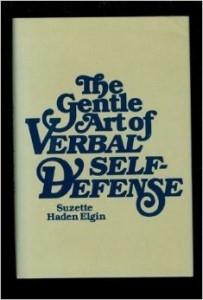
The book won both a Lambda and Tiptree Award, and it’s easy to see why. A dynamite protagonist interacting with intriguing and beautifully three-dimensional characters. The world is fabulously drawn, evocative, and both the anthropological and physical science are accurate and carefully thought out.
Ammonite was Griffith’s debut novel. I’d also recommend her most recent, the absolutely amazing Hild, a retelling of the life of historical figure, Saint Hild of Whitby. Come to think of it, nothing I’ve read by her has been shabby, including Slow River, a near-future thriller that is also beautifully told and engaging.
I had the luck to sit in on a class Griffith taught for Clarion West a couple of years ago. She is a consummate, careful wordsmith. The word “luminous” keeps appearing in reviews of her work, and that’s because it’s so beautifully crafted that it seems to glow from within.
The first three paragraphs of a piece set up so much. Here’s the first three of Ammonite, to give you a taste:
Marghe’s suit was still open at neck and wrist, and the helmet rested in the crook of her left arm. An ID flash was sealed to her should” “Marguerite Angelica Taishan, SEC.” The suit was wrinkled and smelled of just-unrolled plastic, and she felt heavy and awkward, even in the two-thirds gravity of orbital station Estrade.
She stood by the airlock at the inside end of A Section. THe door was already open. Waiting. She rested the fingertips of her right hand on the smooth ceramic of the raised hatch frame; it was cool, shocking after two days of the close human heat of A Section.
The sill of the airlock reached her knees; easy enough to step over. No great barrier. The lock chamber itself was two strides across. THe dar door was still closed, sealed to another sill, like this one. Four steps from here to B Section. Four steps. She had recontracted with SEC, endured six months of retraining on Earth, traveled eighteen months aboard the Terragin, and spent the last two days on the Estrade bumping elbows with the three-member crew, all to take those four steps.
#sfwapro









7 Responses
You Should Read This: Ammonite by Nicola Griffith http://t.co/4uZiNJ9dzW #WeNeedDiverseBooks
RT @Catrambo: You Should Read This: Ammonite by Nicola Griffith http://t.co/4uZiNJ9dzW #WeNeedDiverseBooks
RT @Catrambo: You Should Read This: Ammonite by Nicola Griffith http://t.co/4uZiNJ9dzW #WeNeedDiverseBooks
RT @Catrambo: You Should Read This: Ammonite by Nicola Griffith http://t.co/4uZiNJ9dzW #WeNeedDiverseBooks
.@Catrambo calls HILD by @nicolaz “absolutely amazing”: http://t.co/UR7nLvRVv8 http://t.co/YsGeRdBOyZ
RT @PicadorUSA: .@Catrambo calls HILD by @nicolaz “absolutely amazing”: http://t.co/UR7nLvRVv8 http://t.co/YsGeRdBOyZ
RT @Catrambo: You Should Read This: Ammonite by Nicola Griffith http://t.co/4uZiNJ9dzW #WeNeedDiverseBooks